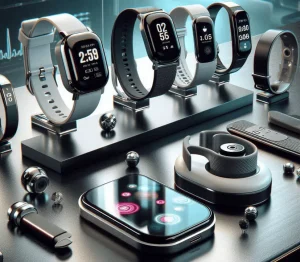In his book ‘The Seven Habits of Highly Effective People’, Stephen R Covey presents an approach to attaining personal goals by aligning oneself to principles that are universal and timeless. Matt Hatch, MD of leading mobile apps solution company Mubaloo, describes how the same ‘Seven Habits’ can be applied to the development of ‘Highly Effective’ mobile apps.
The success of a business app is measured not by how cool it looks, or by its funky user interface, but whether it meets the business objectives of the client. The following principles maximise the likelihood of developing highly effective apps for business clients.
Habit 1: Be Proactive
Companies shaping the mobile apps industry must stay ahead of the curve. In many cases business clients are at the beginning of their mobile journey, starting to become aware of the capabilities of the smartphone as a business platform. Developers must innovate and invest in a broad range of new skills and technologies to enable the client to fully realise these opportunities. Companies like Mubaloo must offer specialisation in virtually all mobile platforms including iPhone/iPad, Android, Windows 7, Blackberry, Bada, Symbian and Web.
App solution companies must take the initiative and continue to innovate, complementing raw performance and functionality with advanced technologies such as 3D graphics and augmented reality (AR). Having the confidence to offer up-front help in concepting and design separates the app solution company from the basic apps developer, enabling the client to embrace and utilise the power of the mobile platform.
Habit 2. Begin with the end in mind
The next step is setting the ultimate objectives of the app. Goals can include brand awareness, information access, extension of existing services and revenue generation. It is important to establish the desired user experience before diving into building the app, which eager developers are prone to do. Time must be taken to determine the ideal characteristics and the analytics that will allow success to be measured. This takes the form of open brainstorming followed by structured business analysis, narrowing down the options before making final decisions. Aids to this part of the process include screen shots and rapid prototyping, allowing the client to see samples of the finished app before embarking on the build.
Habit 3: Put first things first
The next stage is to plan and prioritise the project tasks. Mubaloo, as an example, has set out a structured 5S approach to engaging with the client and deriving the optimal specification. These are:
• Strategy: what do we want to achieve and how will we measure its success?
• Scope: developing a concise brief containing the business and user requirements, the target platforms, functionality, budget and timings
• Structure: detailing the information architecture (IA) and user journey
• Skeleton: developing the functional structure of the complete app using wire-framing
• Surface: developing the Technical, Design and Quality Assurance (QA) specs.
The client is able to decide the entry point of engagement; from early concepting (Strategy and Scope), through delivering a detailed specification (Structure and Skeleton), to the technical and design details (Surface).
Habit 4: Think win-win
The ideal partnership results in a great app for the client and a testimonial for the developer. In a nascent market there are few reference points. A developer with a portfolio of successful apps, satisfied clients and high ratings on the app store provides that reference, and gives confidence to both parties.
Apps that are well specified can be delivered on-time, within budget, and hit business targets for both parties, in many cases leading to a long-term relationship. With respect to return on investment, there are many ways to measure an app’s effectiveness. A good developer integrates analytic tools that allow the client to measure the success in terms of numbers of users, satisfaction and ROI. It is also important for the developer to manage the expectations of the client. While the app has the potential to transform certain businesses, in many cases it is a tool that complements existing systems and sales channels.
Habit 5: Seek first to understand, and then to be understood
The partnership should be greater than the sum of the parts. Even if the developer has already prepared some great ideas, the first thing to do is listen to the client’s requirements and seek a greater understanding of the business priorities. The client should also be open minded, especially if the developer has worked with similar clients and is also able to bring ideas and concepts from other market segments. In general the experience of the client will be narrow and deep, while the developer will have a broad range of case studies to draw from.
Habit 6: Synergise
As in the previous two habits, it is important to recognise that the mobile app journey is a partnership between developer and client, combining the strengths of both parties. It is rarely the case that the client blindly passes a brief ‘over the wall’ and then receives an app that meets its objectives. The client knows its business and what it needs, but to achieve the ultimate app it essential that the strengths of both parties are used in full.
A true app solutions company combines a range of skills beyond the software development team, including a UI design team specialising in a wide range of mobile platforms; business analysts working with the client to derive the optimum mobile experience; project managers ensuring the app is developed on time, to spec and budget; QA professionals mapping out the test plan and deploying tracking tools that the client can share to monitor and use. Professional mobile apps companies dovetail with the client, working together to make the app solution a success.
Habit 7: Sharpen the saw
The circle is completed with the continuous improvement needed to create sustainable long-term business relationships and to continue to develop grate apps. A good carpenter spends time sharpening his tools for the next days work. Similarly a leading apps company must continually tune processes, invest in new multi-platform skills, forge fresh views on the user experience and continue to innovate in a rapidly changing market.
In the embyonic mobile apps market, the successful companies will be those that navigate their clients through the hype curve (ref Gartner), managing expectations through mutual understanding of the platforms capabilities; avoiding disillusionment by ensuring objectives are clear, achievable and measurable; and accelerating the clients journey to enlightenment, where fantastic new mobile technologies open up a new realm of business opportunities






More Stories
Discover the Incredible Peace of Mind from Advanced Wearable Devices for Health Monitoring
Revolutionary Breakthroughs: How Wearable Medical Technology Is Empowering Health Like Never Before
Transform Your Daily Routine with Powerful Wearable Technology Devices for Lasting Vitality